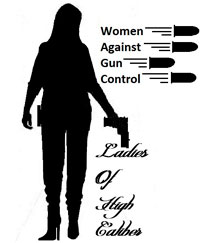U.S. Takes Strong Stance on Arms
fair use:
U.S. Takes Strong Stance on Arms
UNITED NATIONS (AP) – The United States will oppose any U.N. plan to curb
small arms trafficking that interferes with the legitimate right of citizens
to own guns or the legal weapons trade, a senior U.S. official said Monday….
For the full text of this story, click here.
U.S. Takes Strong Stance on Arms
By DAFNA LINZER
.c The Associated Press
UNITED NATIONS (AP) – At the opening of a U.N. conference on small arms
Monday, the United States said it would oppose any plan that interferes with
the legal weapons trade or the right of citizens to own guns.
The Bush administration believes the best way to curb trade in small arms and
light weapons is to get every nation to adopt tough U.S.-style regulations on
exports, weapons transfers and brokers, Undersecretary of State John Bolton
told delegates to the conference.
“The United States will not join consensus on a final document that contains
measures contrary to our constitutional right to keep and bear arms,” Bolton
said.
Finding a way to halt the illegal trade in small arms and light weapons –
responsible for millions of deaths worldwide – will be tough for nations with
vastly divergent stances. Some want to ensure profits are not touched, others
oppose interference in their right to self-defense.
Still, 189 nations sat down together Monday, along with advocates on both
sides of the gun control debate, to discuss ways to halt the lucrative
business U.N. officials say fuels wars and crime and is implicated in 1,000
deaths a day.
Two hours after the conference opened, the United States rejected several
elements of the draft program of action, asked that others be modified and
had its own ideas of what constitutes small arms.
“If the conference can concentrate on the central issue of the flow of
illicit weapons into areas of conflict, then I think there’s broad room for
agreement,” Bolton said at a news conference. “But if it drifts off into
areas that are more properly the subject of national-level decision-making
then I think there will be difficulties.”
Some delegates expressed dismay with the U.S. position.
“I was amazed by the U.S. representative’s remarks. It sounded like he
wanted the conference to collapse,” said Rubem Cesar Fernandes, of the
International Network on Small Arms, a non-profit arms control group.
The more controversial topics at the gathering include controls on the
manufacturing, transfer and possession of small arms, standardized export
criteria and marking and tracing practices.
Norway called for a legally binding document and Iran said it wanted a halt
in weapons supplies to non-states. The United States opposes both.
“There are many delegations that have their views … but I think there is
enough good will so that in these coming two weeks, we can sit together and
try to find consensus and solutions,” said Camilo Reyes, Colombia’s U.N.
ambassador and the conference president.
More than 500 million small arms and light weapons are available – one for
every 12 people on the planet.
Rachel Stohl of the Washington-based Center for Defense Information authored
a study on the impact of small arms on children and found a “definite link
between these weapons and the use of child soldiers.”
“Armed groups give them to kids and anyone strong enough to hold them
becomes a soldier,” Stohl told The Associated Press.
At about $1 billion annually, illegal small-arms trafficking is the
second-largest illicit business after drugs, according to U.N. figures.
“The problem is not so much the dollar value as the vast supply, which makes
small arms very inexpensive to purchase,” said U.N. Deputy Secretary-General
Louise Frechette. “In some places an AK-47 assault rifle can be bought for
as little as $15, or even a bag of grain.”
Those weapons often find their way into countries awash in violence.
There are 10 million light weapons in Afghanistan, the United Nations
estimates. In West Africa, 7 million small arms are circulating in countries
such as Sierra Leone and Angola, devastated by years of civil war. Two
million more are available in war-torn Central Africa.
The United States rejected many hot-button issues, including a proposal that
calls for small arms to be supplied to governments only.
“The United States believes that the responsible use of firearms is a
legitimate aspect of national life,” Bolton said, adding that Washington
would not accept any “measures that would constrain legal trade and legal
manufacture of small arms and light weapons.”
The conference should be concerned with strictly military arms “that are
contributing to continued violence and suffering in regions of conflict
around the world,” Bolton said.
“We separate these military arms from firearms such as hunting rifles and
pistols which are commonly used and owned by citizens in many countries.”
The United Nations defines small arms as revolvers and self-loading pistols,
rifles, submachine guns, assault rifles and light machine-guns. Light weapons
include heavy machine-guns, mortars, hand grenades, grenade launchers,
portable anti-aircraft and anti-tank guns and portable missile launchers.
A startling 5-ton scupture unveiled Monday is made of weapons including
submachine guns confiscated from Nicaraguan children, a 7-inch-long rubber
bullet from Northern Ireland, AK-47s used in South Africa and pistols fired
by street gangs in Los Angeles.



